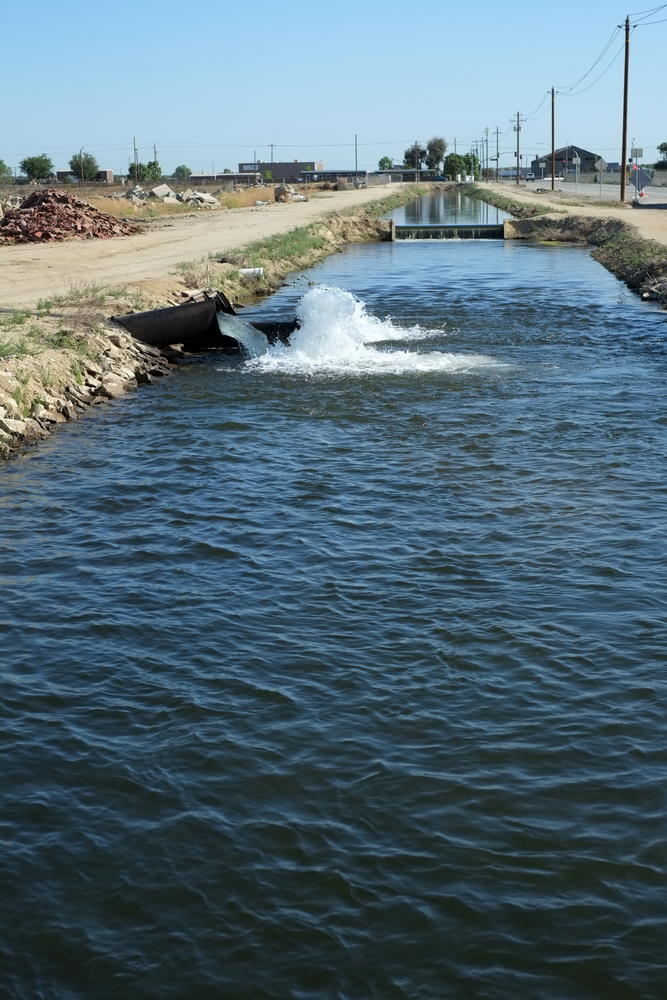Governor Gavin Newsom, with the support of the Department of Water Resources (DWR) and other state agencies, signed into effect new developments for the California Water Plan which details water conservation efforts for the next five years.
Newsom said that the state has invested $9 billion in the last three years, and that “I want folks to know that we are not just victims of fate, that we recognize the world we’re living in.”
Recognizing that California will be operating with ten percent less water in 2040 than what is currently available, Newsom said “We put out a hotter, drier strategy” to offset the loss. This includes plans for improving water security, desalinization plants, stormwater capture, water recycling, and new strategies for large-scale conveyance.
“Innovation is the cornerstone of this five-year plan,” the governor said.
Karla Nemeth, Director of the DWR, followed Newsom’s remarks by placing an emphasis on climate resilience through forest management, which will ultimately affect downstream water availability and quality in watersheds and into floodplains.
“We need to do a better job managing our floodplains to make sure that we’re recharging our groundwater basins,” Nemeth said, “All of these things fit together, and the California Water Plan is the first plan to really rest on watershed scale planning.”
The updated plan provides objectives to improving watersheds, natural and artificial water infrastructure through ecosystem restoration, and closing the gaps of inequity between communities. Other imperatives include learning sustainable water management practices from native California tribes, improving the flexibility of regulatory programs, and providing guidance and resources for greater water resilience in California.
The agriculture industry will most notably be affected by the improved flexibility of regulatory systems and the feasibility of groundwater recharge. California Farm Bureau President Shannon Douglass affirmed the updated California Water Plan. “We’re encouraged that the plan highlights infrastructure projects to capture, store, and convey water supplies,” she said. “We’re also pleased that it seeks to reduce permitting burdens for projects that support water resilience, including through groundwater recharge and habitat restoration.”
With regards to infrastructure, the governor said California is making “real progress on conveyance.” The state continues to look at natural integration solutions that build upon environmental infrastructure such as rivers and streams connected to over 1,000 miles of canals, improving water quality and flow.
The plan says that California surface water infrastructure supports up to 40 million acre-feet of storage, where a principal emphasis will be placed on improving groundwater recharge and minimizing the burdens of permitting irrigation practices.
Nemeth said that the current infrastructure was “built decades ago for a certain hydrology” and that the governor is supporting groundwater infrastructure because it has 10 times the capacity of surface water. Underground aquifers also act as water regulators during dry years, Nemeth said.
During drought periods, groundwater reliance increases to 60 percent of all water use, making it the most valuable defense against future droughts.
In the Sacramento-San Joaquin Delta, the governor said that “we are investing significant money” in capturing stormwater for groundwater replenishment and desalination of brackish water for urban use. Additionally, there will be an update to the Delta plan to reveal estimated costs and partnerships with large and small users of Delta water, fast-tracking environmental work.
When asked in the press conference following the California Water Plan update and its effects on the agriculture industry, Newsom said that there is increased “vigilance of working with agriculture related to healthy soils, regenerative agriculture, water efficiency, and precision technology” to achieve the goals of resilience and water sustainability.
In his remarks to the press, Newsom attributes the potential for improvement to the leadership in the state Legislature, as “everyone is getting along in challenging times” despite the current budget deficit.
Nemeth reaffirmed Newsom’s intentions for the California Water Plan, saying “Adaptation to swings in weather includes more physical infrastructure and backbone infrastructure with natural solutions.”
Contributing Author:
Lauren McEwen
AgNet West Intern











